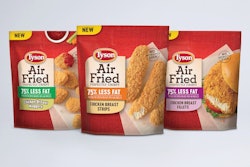
Probiotics hold a lot of promise as an antibiotic alternative for use in poultry capable of gut-health support, production efficiency, and pathogen control. However, often the use of probiotics can feel “hit or miss” with inconsistent results leaving the end user unsure if probiotic benefits are worth the cost.
There are many factors that can contribute to the inconsistent results of probiotic use in poultry, whether that is the bacterial species in the probiotic used, the type of diet that the probiotic is being used with, or the microbiome that the probiotic is introduced into. New research out of the Netherlands that explores the poultry microbiome with a high level of detail is adding another factor to the list; there may be only a few optimal times where probiotic supplementation will have a beneficial effect.
The gut microbiome, the collection of bacteria present in the intestinal tract, of poultry evolves over time. As the bird, its immune system, and its digestive physiology mature, the gut microbiome is also maturing and changing, and it is becoming clearer that there is a complex relationship between the gut microbiome and the immune system that is difficult to separate.
During development, the gut microbiome goes through periods of stability, where certain bacteria dominate, and periods of instability and flux as it transitions to a new phase. The difference between these two phases can be dramatic with entirely new species of bacteria dominating from one phase to the next.
It is in these periods of instability where competition between bacterial groups is most intense, change is most likely, and windows of opportunity are created. It may be that these windows offer a probiotic the chance of altering the course of gut microbiome development towards a more positive situation.
Period 1: Days 3-4
This first window is a critical one, as this is when the clostridia group gets a toehold and overtakes Escherichia and Streptococcus to dominate the gut microbiome. While this may be a familiar changeover to some people, new microbiome studies in poultry have shown that the shift occurs earlier and more sharply than we had previously considered. Keep in mind that the vast majority of organisms in the Clostridiales group are beneficial with important metabolic jobs to do, but this is also where clostridia that we do not want also begin to appear.
At the same time, there is a lot of immune activity occurring in the gut that has both short- and long-term consequences. It is shortly after this period ends that we can see inflammatory responses driven by the presence of key Clostridiales organisms present in the gut microbiome. It is worth considering that this window is vital for preventing long-term clostridia issues before they start.
Period 2: Days 7-14
The second period is marked by a shift towards a more diverse “adult” type microbiome. The dominance of the Clostridiales group is challenged by a number of “specialists” and beneficial bacteria that rapidly increase the overall richness and diversity of both the gut microbiome and the variety of bacterial functions present.
It is during this period that we see the rise of many of the bacterial species we commonly feed as probiotics such as Lactobacilli. At the same time, we are getting additional communication between the gut microbiome and the immune system with many key microbiome members having impacts on development of gut innate and adaptive immune functions. Introduction of the right probiotics in this important window can help drive the more “adult” microbiome.
The poultry microbiome is a fascinating topic and we are just starting to scratch the surface of what we can learn. This new knowledge that there are key times where we can take advantage of the competitive environment brings the promise of consistent and predictable probiotic use even closer.
Working toward a better understanding of poultry dysbiosis
www.WATTAgNet.com/articles/38055

















